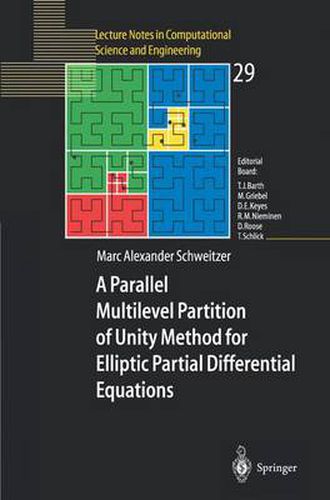Readings Newsletter
Become a Readings Member to make your shopping experience even easier.
Sign in or sign up for free!
You’re not far away from qualifying for FREE standard shipping within Australia
You’ve qualified for FREE standard shipping within Australia
The cart is loading…






The numerical treatment of partial differential equations with meshfree discretization techniques has been a very active research area in recent years. Up to now, however, meshfree methods have been in an early experimental stage and were not competitive due to the lack of efficient iterative solvers and numerical quadrature. This volume now presents an efficient parallel implementation of a meshfree method, namely the partition of unity method (PUM). A general numerical integration scheme is presented for the efficient assembly of the stiffness matrix as well as an optimal multilevel solver for the arising linear system. Furthermore, detailed information on the parallel implementation of the method on distributed memory computers is provided and numerical results are presented in two and three space dimensions with linear, higher order and augmented approximation spaces with up to 42 million degrees of freedom.
$9.00 standard shipping within Australia
FREE standard shipping within Australia for orders over $100.00
Express & International shipping calculated at checkout
The numerical treatment of partial differential equations with meshfree discretization techniques has been a very active research area in recent years. Up to now, however, meshfree methods have been in an early experimental stage and were not competitive due to the lack of efficient iterative solvers and numerical quadrature. This volume now presents an efficient parallel implementation of a meshfree method, namely the partition of unity method (PUM). A general numerical integration scheme is presented for the efficient assembly of the stiffness matrix as well as an optimal multilevel solver for the arising linear system. Furthermore, detailed information on the parallel implementation of the method on distributed memory computers is provided and numerical results are presented in two and three space dimensions with linear, higher order and augmented approximation spaces with up to 42 million degrees of freedom.